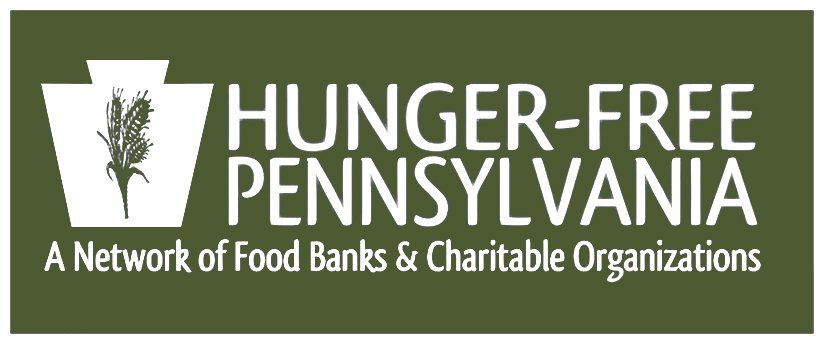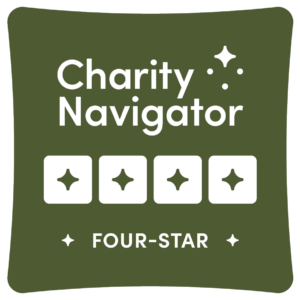
Operation Fresh Express Battling Food Waste For 21 Years
The Westmoreland County Food Bank is gearing up for the start of the 2020 Operation Fresh Express distributions, entering the program’s 21st year of battling food waste. The Operation Fresh Express (OFE) concept was unique to food banking when it was introduced at WCFB in 1999. The founders of the program were looking at the amount of food that pantry sites could not accept because of limited cooler and freezer space, and were trying to determine a way to get the product to people in need without employing the alternative of discarding it, which totally defeats the purpose of food banking.
In 2019 alone, over 656,000 pounds of additional food was provided to roughly 2,270 households through the program. Each week, groups or individuals sponsor an OFE distribution where perishable food (frozen foods, dairy, and fresh produce) is directly distributed to families by WCFB staff and volunteers at sites throughout Westmoreland County.
Since the inception of the OFE program, the Westmoreland County Food Bank program has saved over 12.5 million pounds of food from reaching our landfills. America has more than enough food to feed everyone. Our abundance in this Country is accompanied by a tremendous amount of waste. According to Feeding America (2020) by some estimate, nearly half of the food grown, processed and transported in the United States goes to waste.
Food loss occurs at every stage of the food production and distribution system. Not including consumer waste at home, over 20 billion pounds of fruits and vegetables are discarded on farms or left in fields and plowed under. Approximately 70 billion pounds of food ends up in landfills every year. Rescuing this perfectly edible, whole food means feeding families facing hunger, taking a large step in protect our planet, and conserving our resources.
The Feeding America network, which includes the Westmoreland County Food Bank, has rescued over 3.5 billion pounds of food from all over the country. In the last ten years, over 8.6 million pounds of food have been rescued through Westmoreland County donors, which include grocery stores, big box stores, etc. That food went to feeding people facing hunger and food insecurity.
Moreover, through a recent partnership with Feeding America and Sheetz, the Sheetz Made-to-Share food donation program began in Westmoreland County in 2019. Sheetz established support for those in need in the communities they serve, by sharing the love and providing weekly product donations from each of their 600 stores, which includes fifteen in just Westmoreland County alone. The Westmoreland County Food Bank has matched on-site feeding organizations with each of these stores and has rescued 18,509 pounds in one year.
The best approach to reducing food loss and waste is not to create it in the first place. Waste can be avoided by improving product development, storage, shopping/ordering, marketing, labeling, and cooking methods. If excess food is unavoidable, recover it to donate to hunger-relief organizations, so that we can feed people in need (USDA).
To find out more about Westmoreland County Food Bank’s Operation Fresh Express program and how you can help, please call Gina Colosimo at 724.468.8660 extension 31 or email her gina@westmorelandfoodbank.org.
Resources
Fighting Food Waste with Food Rescue. (n.d.). Retrieved from
https://www.feedingamerica.org/our-work/our-approach/reduce-food-waste
Food Waste FAQs. (n.d.). Retrieved from https://www.usda.gov/foodwaste/faqs
About Westmoreland County Food Bank
The Westmoreland County Food Bank serves over 7,000 unduplicated households each month. WCFB currently has 66 member agencies in their network of emergency feeding sites. Of those, 44 are food pantries in which low income consumers are able to access emergency food assistance throughout the month. Last year (2019), the Food Bank distributed over 7 million pounds of food. 50% of WCFB’s food comes from the federal and state governments and the remaining 50% from local donations, food drives, and Feeding America™
Share this article...

Operation Fresh Express Battling Food Waste For 21 Years
The Westmoreland County Food Bank is gearing up for the start of the 2020 Operation Fresh Express distributions, entering the program’s 21st year of battling food waste. The Operation Fresh Express (OFE) concept was unique to food banking when it was introduced at WCFB in 1999. The founders of the program were looking at the amount of food that pantry sites could not accept because of limited cooler and freezer space, and were trying to determine a way to get the product to people in need without employing the alternative of discarding it, which totally defeats the purpose of food banking.
In 2019 alone, over 656,000 pounds of additional food was provided to roughly 2,270 households through the program. Each week, groups or individuals sponsor an OFE distribution where perishable food (frozen foods, dairy, and fresh produce) is directly distributed to families by WCFB staff and volunteers at sites throughout Westmoreland County.
Since the inception of the OFE program, the Westmoreland County Food Bank program has saved over 12.5 million pounds of food from reaching our landfills. America has more than enough food to feed everyone. Our abundance in this Country is accompanied by a tremendous amount of waste. According to Feeding America (2020) by some estimate, nearly half of the food grown, processed and transported in the United States goes to waste.
Food loss occurs at every stage of the food production and distribution system. Not including consumer waste at home, over 20 billion pounds of fruits and vegetables are discarded on farms or left in fields and plowed under. Approximately 70 billion pounds of food ends up in landfills every year. Rescuing this perfectly edible, whole food means feeding families facing hunger, taking a large step in protect our planet, and conserving our resources.
The Feeding America network, which includes the Westmoreland County Food Bank, has rescued over 3.5 billion pounds of food from all over the country. In the last ten years, over 8.6 million pounds of food have been rescued through Westmoreland County donors, which include grocery stores, big box stores, etc. That food went to feeding people facing hunger and food insecurity.
Moreover, through a recent partnership with Feeding America and Sheetz, the Sheetz Made-to-Share food donation program began in Westmoreland County in 2019. Sheetz established support for those in need in the communities they serve, by sharing the love and providing weekly product donations from each of their 600 stores, which includes fifteen in just Westmoreland County alone. The Westmoreland County Food Bank has matched on-site feeding organizations with each of these stores and has rescued 18,509 pounds in one year.
The best approach to reducing food loss and waste is not to create it in the first place. Waste can be avoided by improving product development, storage, shopping/ordering, marketing, labeling, and cooking methods. If excess food is unavoidable, recover it to donate to hunger-relief organizations, so that we can feed people in need (USDA).
To find out more about Westmoreland County Food Bank’s Operation Fresh Express program and how you can help, please call Gina Colosimo at 724.468.8660 extension 31 or email her gina@westmorelandfoodbank.org.
Resources
Fighting Food Waste with Food Rescue. (n.d.). Retrieved from
https://www.feedingamerica.org/our-work/our-approach/reduce-food-waste
Food Waste FAQs. (n.d.). Retrieved from https://www.usda.gov/foodwaste/faqs
About Westmoreland County Food Bank
The Westmoreland County Food Bank serves over 7,000 unduplicated households each month. WCFB currently has 66 member agencies in their network of emergency feeding sites. Of those, 44 are food pantries in which low income consumers are able to access emergency food assistance throughout the month. Last year (2019), the Food Bank distributed over 7 million pounds of food. 50% of WCFB’s food comes from the federal and state governments and the remaining 50% from local donations, food drives, and Feeding America™










